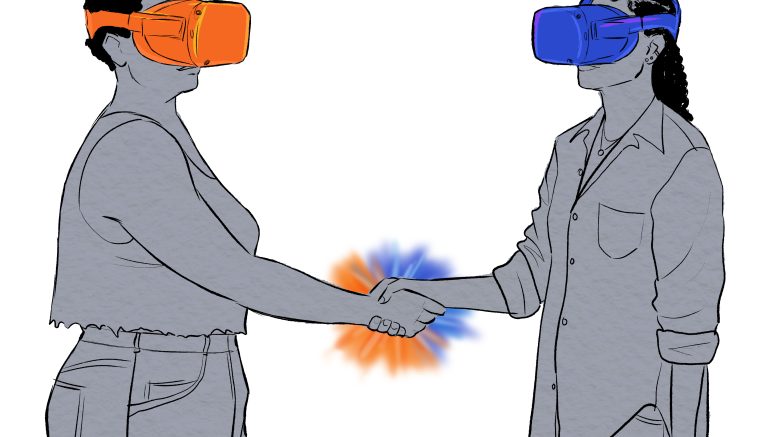The pandemic taught me a lot about the importance of communities and friendships as support systems. The problem was, as the lockdowns got tighter, I saw people far less frequently. I recently found myself hanging out in virtual reality (VR) communities like VRChat — an interactive forum where players can customize their avatars and create their own worlds to spend time with others — and meeting random strangers from around the world through the image of their avatars.
Initially, I decided to check VR communities out after I listened to a Mark Zuckerberg podcast about his vision for the metaverse. He explained how VR and augmented reality experiences are being streamlined to build communities and foster spaces for interaction. While I am not interested in Zuckerberg’s philosophy on the metaverse, I was fascinated by the steps Meta is taking through Oculus — a type of VR headset — to make VR technology more affordable and accessible so people can engage with the systems they are creating.
I decided to explore the current communities and the worlds that exist within my VR headset.
Strapping in and finding VRChat on the Oculus store was an accessible, easy and intuitive experience. It felt seamless and the only uncomfortable part of the experience was having to put the VR headset over my glasses, but there are options that can put lens prescriptions in VR headsets.
Following my purchase, I spent most of my time in VRChat. This is what blew my mind about the unlimited possibilities in the VR space.
Picture my first social experience in VR: I was in a restaurant world that was textured just like a five-star restaurant. I spawned at the front door and walked into the building gazing at the walls and the varieties of wood and glass finishes that coated the structure. The room was very well lit and there were tables, bars and booths for people to sit in. To my left, a group of avatars were clumped up and I overheard them talking about a variety of topics that ranged from a party they were planning to their favourite food in the real world. I walked into the middle of the group shyly and waved to introduce myself. Some of them responded and invited me to sit with them. They knew that I was new because the avatar I picked was a popular one for newcomers.
As I was making my introduction, one of them opened a portal to another world. Upon stepping into the portal, I realized we were in an avatar world — a world created for players to pick a variety of avatars and to try them on like you would with clothes at a store. There were mirrors that helped me see what I looked like as I flipped through the options. I found myself stuck there for what felt like a couple hours before I finally picked an avatar. We headed back to the restaurant and the others were waiting for us.
My first impression of the VR universe was that it was wholesome and inviting. While still isolated in the real world, I was happy to find a community of people that I could gather with.
What fascinates me about this technology is the opportunity for endless possibilities in terms of bridging connections with others in a world without limitations. In VRChat, I spent time in a world that was jet-pilot themed for people who loved the serene experience of flying through mountain peaks and canyons. In a world where travelling has been a distant memory for most during the pandemic, VR offered a taste of normalcy and excitement. Flying was just one world in a universe of full of possibilities.
In the time I spent in these VR environments, I found myself connecting with other players with similar interests in the themes and environments we were surrounded by. The possibilities were endless so my social interactions were enriched.
VR offers people who are still worried about the dangers that COVID-19 poses to their health an outlet to maintain their social lives without traditional contact. While Zoom simply doesn’t cut it, VR has been a community I could rely on as the real world became more unpredictable.


